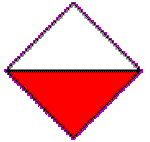 |
| Category:1st AIF/2nd
Div/6th Bde |

|
|
|
|
|

- 24th Battalion AIF
(Victoria) [6th Infantry Brigade]
Formed Victoria February 1915. Departed Melbourne Euripides
8 May 1915.
- 1st Reinforcement departed Sydney Ceramic
26 June 1915,
- 2nd Reinforcements departed Melbourne Demosthenes
16 July 1915,
- 3rd Reinforcements departed Melbourne Anchises
26 August 1915,
- 4th Reinforcements departed Melbourne Hororata
27 September 1915,
- 5th Reinforcements departed Melbourne Osterley
29 September 1915,
- 6th Reinforcements departed Melbourne Ulysses
27 October 1915,
- 7th Reinforcements departed Melbourne Commonwealth
26 November 1915,
- 8th Reinforcements departed Melbourne Afric
5 January 1916,
- 9th Reinforcements departed Melbourne Warilda
8 February 1916,
- 10th Reinforcements departed Melbourne Wiltshire
7 March 1916,
- 11th Reinforcements departed Melbourne Malwa
21 March 1916,
- 12th Reinforcements departed Melbourne Euripides
4 April 1916,
- 13th Reinforcements departed Melbourne Themistocles
28 July 1916,
- 14th Reinforcements departed Melbourne Miltiades
1 August 1916,
- 15th Reinforcements departed Melbourne Shropshire
25 September 1916,
- 16th Reinforcements departed Melbourne Nestor
2 October 1916,
- 17th Reinforcements departed Sydney Argyllshire
31 October 1916,
- 18th Reinforcements departed Melbourne Hororata
23 November 1916,
- 19th Reinforcements departed Melbourne Ascanius
11 May 1917,
- 20th Reinforcements departed Melbourne Nestor
21 November 1917.
Battle Honours: Suvla, Gallipoli 1915,
Egypt 1915-16, Somme 1916-18, Pozieres, Bapaume 1917, Bullecourt, Ypres
1917, Menin Road, Polygon Wood, Broodeseinde, Poelcappelle,
Passchendaele, Ancre 1918, Hamel, Amiens, Albert 1918, Mont St Quentin,
Hindenburg Line, Beaurevoir, France and Flanders 1916-18
Egypt, Gallipoli, Western Front
by
Ross Mallett (ADFA)
24th Battalion
The 24th Battalion was raised in a
hurry. The original intent was to raise the fourth battalion of the
6th Brigade from the “outer states”, but a surplus of recruits
at Broadmeadows Camp in Victoria lead to a decision being made to
raise it there. The battalion was formed during the first week of
May 1915, and sailed from Melbourne at the end of that week.
Training shortfalls were made up
in Egypt in July and August, and on 4 September 1915 the Battalion
went ashore at Gallipoli. It spent the next 16 weeks sharing duty in
the Lone Pine trenches with the 23rd Battalion. The fighting at Lone
Pine was so dangerous and exhausting that battalions rotated every
day. While the bulk of the battalion was at Gallipoli, a small party
of 52, trained as packhorse handlers, served with the British force
in Salonika.
The Battalion was reunited in
Egypt in early 1916 and proceeded to France in March. It took part
in its first major offensive around Pozières and Mouquet Farm in
July and August 1917. The Battalion got little rest during the bleak
winter of 1916–17 alternating between the front and labouring
tasks. When patrolling no-man’s land the men of the 24th adopted a
unique form of snow camouflage – large white nighties bought in
Amiens.
In May 1917 the battalion
participated in the successful, but costly, second battle of
Bullecourt. It was involved for only a single day – 3 May – but
suffered almost 80 per cent casualties. The AIF’s focus for the
rest of the year was the Ypres sector in Belgium, and the 24th’s
major engagement there was the seizure of Broodseinde Ridge.
Like many AIF battalions, the 24th
was very weak at the beginning of 1918, but still played its part in
turning back the German offensive in April. When the Allies took to
the offensive, the 24th fulfilled supporting roles during the
battles of Hamel and Amiens. At Mont St Quentin, however, it played
a major role by recapturing the main German strong point atop the
summit on 1 September. A diorama at the Australian War Memorial
depicts this attack.
The battalion’s last battles of
the war were at Beaurevoir on 3 October and Montbrehain on 5
October. It left the front line for the last time on 6 October 1918
and disbanded in May 1919.
- 909 killed, 2494 wounded
(including gassed)
-
Decorations
- 1 VC
- 1 CB
- 6 DSO, 1 bar
- 1 OBE
- 1 MBE
- 29 MC, 3 bars
- 23 DCM, 1 bar
- 127 MM, 12 bars
- 7 MSM
- 31 MID
- 7 foreign awards
|
|
|

